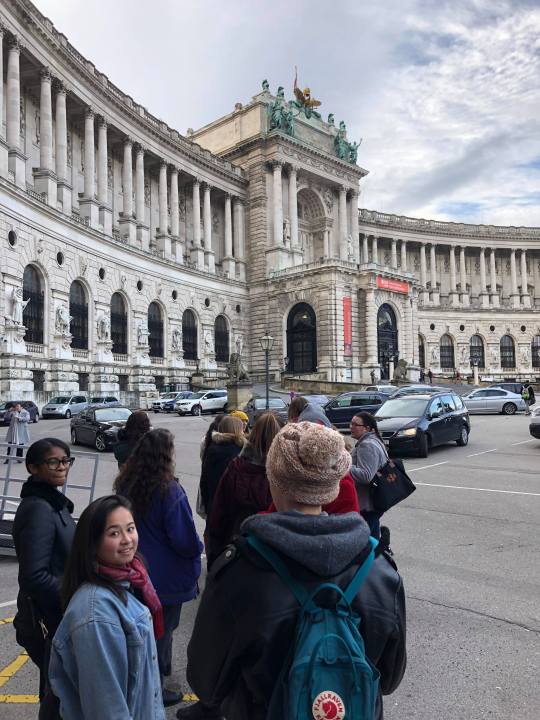#nora gibbons
Studying in the city of Renassaince.
by Nora Gibbons.
After semesters in Costa Rica and Spain, theLIU Globalclass of 2020 all have
experience in the art of essay writing and crafting a written argument. But how many of us have had the chance to express our ideas in a visual or fine art form, through video or printmaking or drawing or photography? These are the opportunities we have had over the last couple of months at the Florence School of Fine Arts. Now, not only do we have the skills to write a research paper on our favorite global issue, we also have experience creating documentary videos about climate change or using augmented reality technology to comment on the visibility of women in a variety of realms.
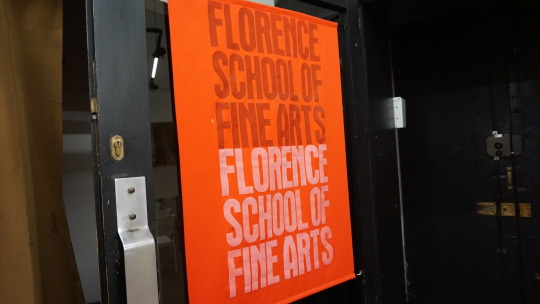
Located in the Santa Croce neighborhood in central Florence, the Florence School of Fine Arts, according to cofounder Melania Lanzini, “is an innovative arts program bringing forth new ideas and different approaches to teaching.” The school itself is actually located in the former home of Giorgio Vasari, a notable writer, architect, and artist in the Renaissance. And this is not the only brush with history that we get to experience throughout our days in Florence.

Some of us wake up to a view of frescos on our bedroom ceilings in our apartments or walk past Brunelleschi’s famous Duomo on our way to school. We spend each Friday morning some of the most renowned museums and historical sites in Florence, learning about Renaissance art from our professor Frederica, a talented art historian.

In addition to the Renaissance art class, the Florence School offers us courses in Italian language, interactive design, filmmaking, and world cinema. For those of us Global students able to take an overloaded schedule there are also opportunities for drawing, photography, printmaking, letterpress, and bookbinding classes.
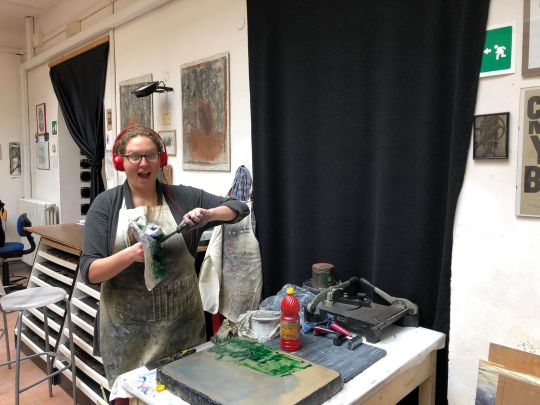
For many of us, our only wish is that we could have taken advantage of more of the courses offered at the Florence School.
Since we are each taking different electives based on our interests, each of our days looks different. Some of us may head to the studio early to work on interactive design projects, using technology on smartphones to turn photos, drawings, and paintings into an interactive sight and sound experience or to work on hand binding books of our artworks. Others may have a slower
morning in our apartments drinking a cappuccino and preparing for a world cinema presentation later in the day.

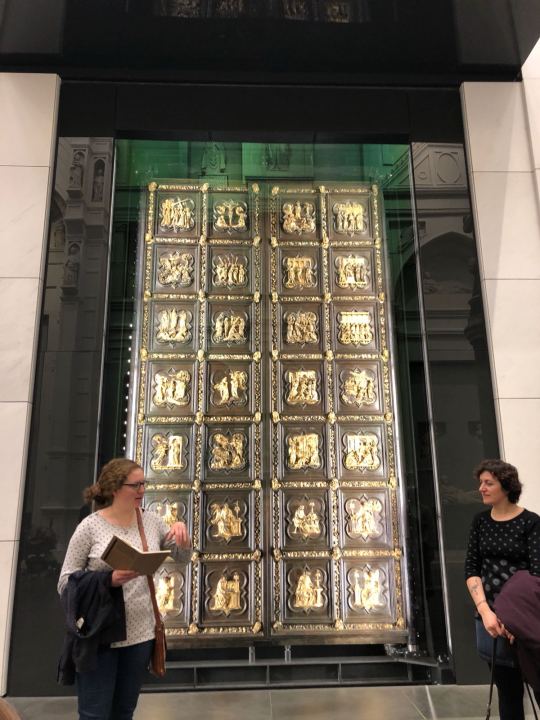
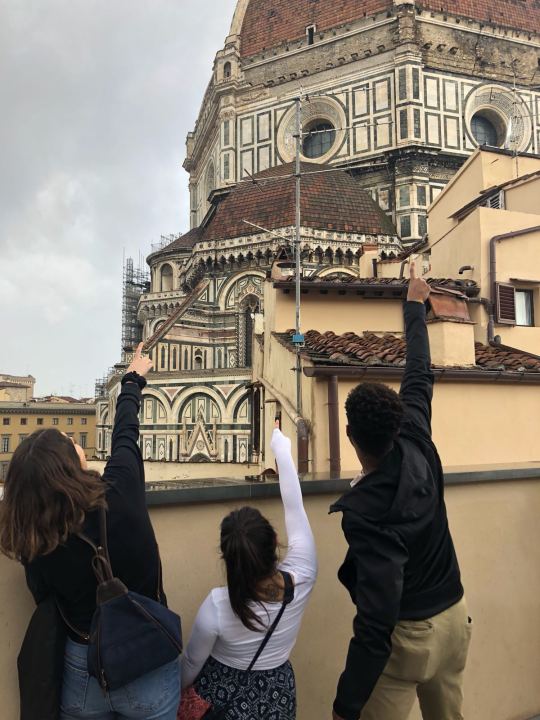
The main constant throughout our diverse days though is the opportunity to express ourselves creatively, surrounded by a city filled with inspiration.
For many of us though, the best part of this experience is the people.
We have been so grateful for the support of theFlorence Schoolfounders, Charles Loverme and Melania Lanzini, and all the staff of the Florence School. From advice and guidance on our creative projects to fixing a
leaking washing machine late at night, we can always count on them to support us and advocate for us and cannot thank them enough.
Post link
TheLIU GlobalEurope Center students started off their semester with a chilly and busy trip to Vienna and Budapest. The experiential learning excursions we participated in there mostly focused on visits to intergovernmental organizations, like OPEC and the UN offices. Our last day’s visit was quite different though, and for some students, quite impactful. The group visited a primary school in Vienna. We began with listening to a presentation about the school system in Austria in general, as well as some of the specific practices of this school.
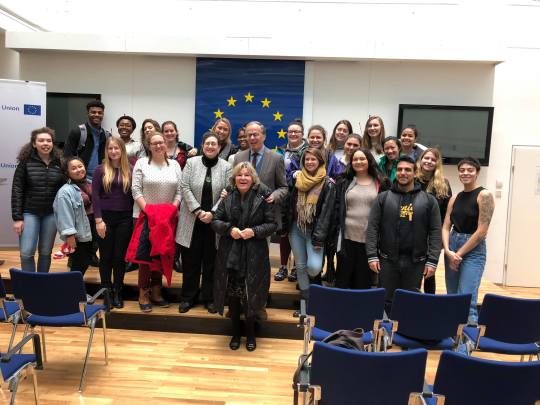
One of the most interesting things for many Global students was the system of age mixed classrooms. Mixed age learning environments are not the norm in most public schools in the US, although they do exist in many alternative learning environments. Psychologist Peter Gray at Boston College has conducted numerous studies on the benefits of this type of learning environments. He summarizes some of his findings in a 2011 article in the American Journal of Play entitled “The Special Value of Children’s Age Mixed Play” as such: “age-mixed play offers advantages for learning skills, culturally relevant information, cultural routines, nurturance, and leadership that go beyond those of same-age play.”
Our class at Global comes from a diverse educational background, so we had many different viewpoints on the concept of mixed age classrooms before this experience. Some of us did were International Baccalaureate students, some took AP classes, some came from Waldorf and Montessori schools, some are self-directed learning and democratic free school enthusiasts. Some of us fall into none of those categories, some a combination of a few. However, after learning a bit about the implementation of this mixed age system we were able to put our previous perceptions aside as best we could, and head into classrooms to observe this in action. We split up and visited classrooms in groups of two or three. Because the teachers in these classrooms have a wide range of freedom in lesson planning, each group of Global students observed very different environments and activities. Although some Global students did not feel that the classrooms they observed were effective learning environments, one Global group, in particular, participated in a very powerful experience. Gwen Lindberg, Seeley Davidson, and Aaleah Oliver observed a mixed age consent workshop of sorts. Below is an interview with them about this experience.

What thoughts or impressions did you have of mixed age learning environments before visiting this school?
SD: I was in Montessori school growing up so I was in mixed-age classrooms until 5th grade. I have mixed opinions but for the most part, it’s positive.
GL: I personally think age shouldn’t be the defining factor in class placement. It should be based on each student’s individual preferences, learning style, areas of interest (or particular talent), that sort of thing. If students are placed into classes based on those criteria, that automatically creates mixed-aged learning environments that are more catered towards kids’ needs and desires.
AO: Before visiting this school, I thought that mixed aged learning environments were what happens when a school is underfunded and forced to group students of different ages together in order to save money.
How did you find the overall vibe of the classroom to be?
SD: The room I was in seemed super loving and based on the mutual happiness of all students! It all seemed positive and productive and as though everyone in the space was getting as much as they personally could out of the experience.
GL: I thought this mixed-age class was a really good example of an excellent classroom environment. Students of different ages and backgrounds intermingled with no discernible separation or ostracism (granted this is based on a very brief period of time, so my observations need a lot more evidence). I was particularly impressed with the way some students helped to translate instructions, assignments, or announcements for each other; language barriers did not a pose a problem, as students worked together or just about everything.
AO: The vibe of the classroom was relaxed and focused. Most, if not all, of the students, appeared to be engaged in the workshop
Can you describe the activity or conversation you observed in the classroom?
SD: The activity we walked in on was consent training performed by an outside organization. As soon as we entered the room one of the adults asked the students if they felt comfortable having visitors in the room. One student had been in the bathroom during this process and when he returned he was asked individually. There were three session leaders and three teachers. It was all conducted in German and since none of us speak the language we were pretty lost, but after watching for a bit we were able to infer it was a consent training session. The three organizational staff members were engaging everyone in a conversation about ‘good touch’ and 'bad touch’. These leaders were acting out a skit about different kinds of touch with various people in their lives. Afterwards was a session where students worked together to identify touches on a worksheet including where they filled in their own answers and made their own scenarios. A high point of this experience was a conversation I had with a teacher about the students in the class and why she thought this kind of education was important. She was super excited to chat about her views, and also reminded me of the personal experiences each student came into that environment with, specifically refugee students, and why this type of workshop is helpful for them. She also talked about her own experience growing up as a first-generation immigrant in Austria and how she uses her story to relate to the children she teaches.
AO: I observed a consent training workshop that appeared to be broken up into section: the facilitators of the workshop would perform a few short skits, then the facilitators asked the students some questions, (that appeared to require some reflection from the students), then the classroom of students separated and began individual work on a handout where different body parts went down the page vertically and feelings were written horizontally. I believe the students had to decide which people made them feel that when they touched them somewhere.
How do you think this activity may help or inform the students now and later in life?
SD: Consent training is important from day one. It should be a required course when kids start school and transition into consent plus sex ed when the time comes. I feel like people have a lot of misconceptions about what consent training looks like, and it wasn’t at all a weird environment where kids were expected to act as formal mini-adults, they were still their goofy ridiculous selves but with a new knowledge that they hadn’t had before that they could now reference in play. These lessons are important because they give people a language for feelings that are difficult to explain or express. Now when they wrestle and play there will be a context for them (and their teachers) to refer back to when these issues of consent come up.
AO: I think this activity will help the students to be aware of and respect their physical boundaries and the physical boundaries of others
Did you have any previous experience with consent training? How did this experience impact you?
SD: Yes, I’m kind of obsessed. I’ve been looking for a comprehensive consent training course that I feel like is easily translated to different languages and relatable to people of many different cultures for a while now! I don’t think what I witnessed in Vienna was the full answer, but it was incredible to witness firsthand and to get insight into the methods of people trying to accomplish similar goals.
GL: I have never been a part of consent training before, but this seems like an absolutely incredible way of teaching young kinds to be open and comfortable. It acts as both an indicator of possible abuse, and as a way for kids to very concretely lay out how they feel about certain people and certain touch, with no external peer or societal pressure. I sincerely wish this could have been something I participated in as a kid, and I want to help spread this idea to a grand scale.
